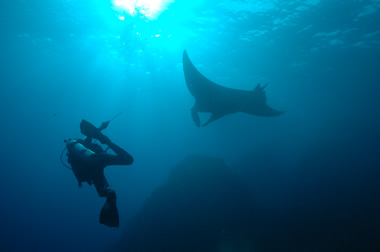Koh Losin is one of Thailand’s dive sites not known to many divers, only accessible for a couple of months a year and a place where both manta rays and whale sharks are regularly spotted
I thought I had a pretty good idea about most of the scuba diving around Thailand, but recently I found out about Koh Losin, which I hadn’t heard of before. A reef of big bommies, drop offs and plateaus located in the far south of Thailand off the coast of Pattani province, Koh Losin is renown for sighting of manta rays and whale sharks. While the biggest fish in the world does turn up a few times every year around Koh Tao, I was really surprised to hear about manta rays being seen at Koh Losin, as they’re very rarely seen anywhere else in the Gulf of Thailand.
The catch with Koh Losin is that there is only a window of a couple of months each year to go and see it – as far as I can work out. June to September is the best time, and weather conditions can make it difficult even within these times. The reef is right out in the middle of the ocean so there’s nowhere to run if the wind comes up. Even so, it sounds like a fantastic place to explore, whether or not the mantas and whale sharks turn up.







